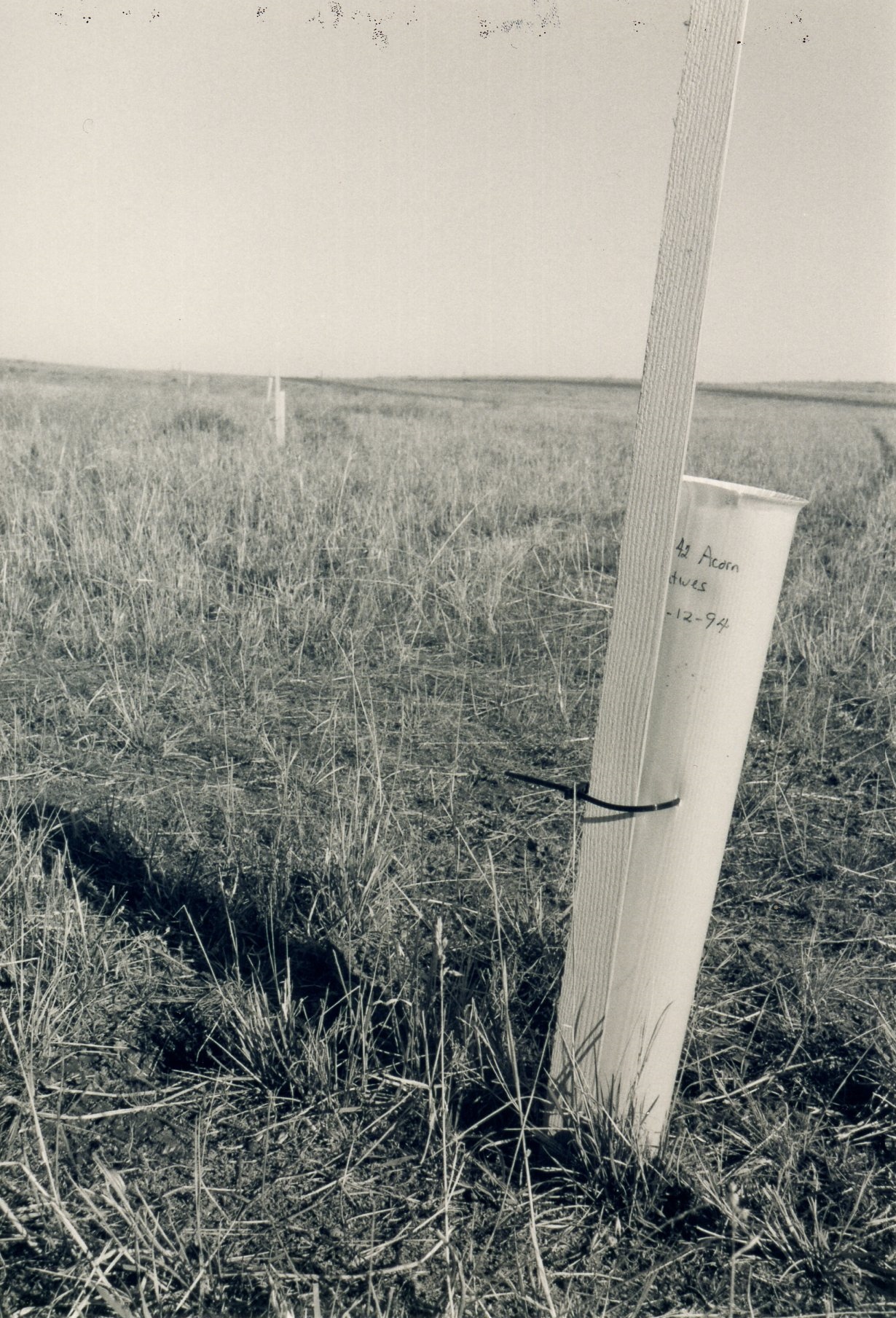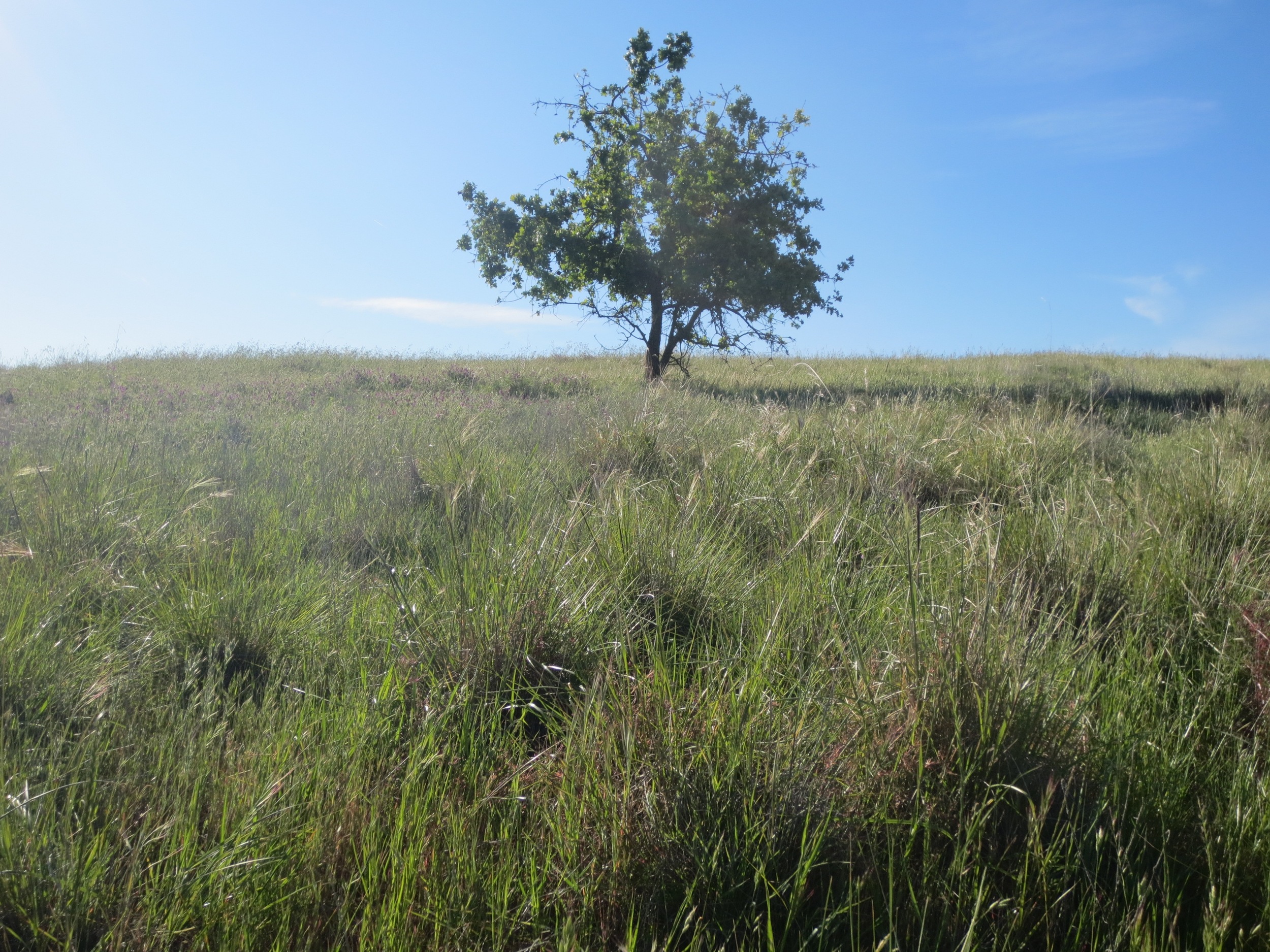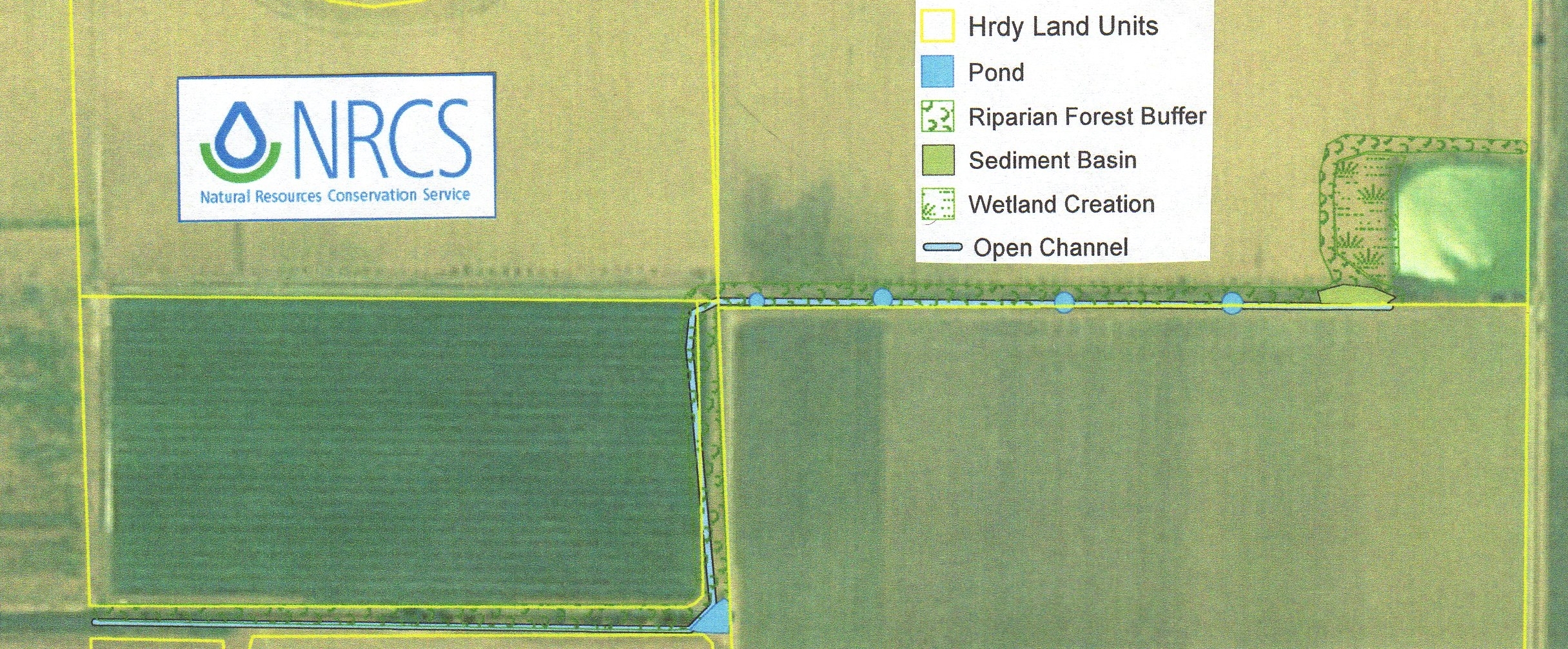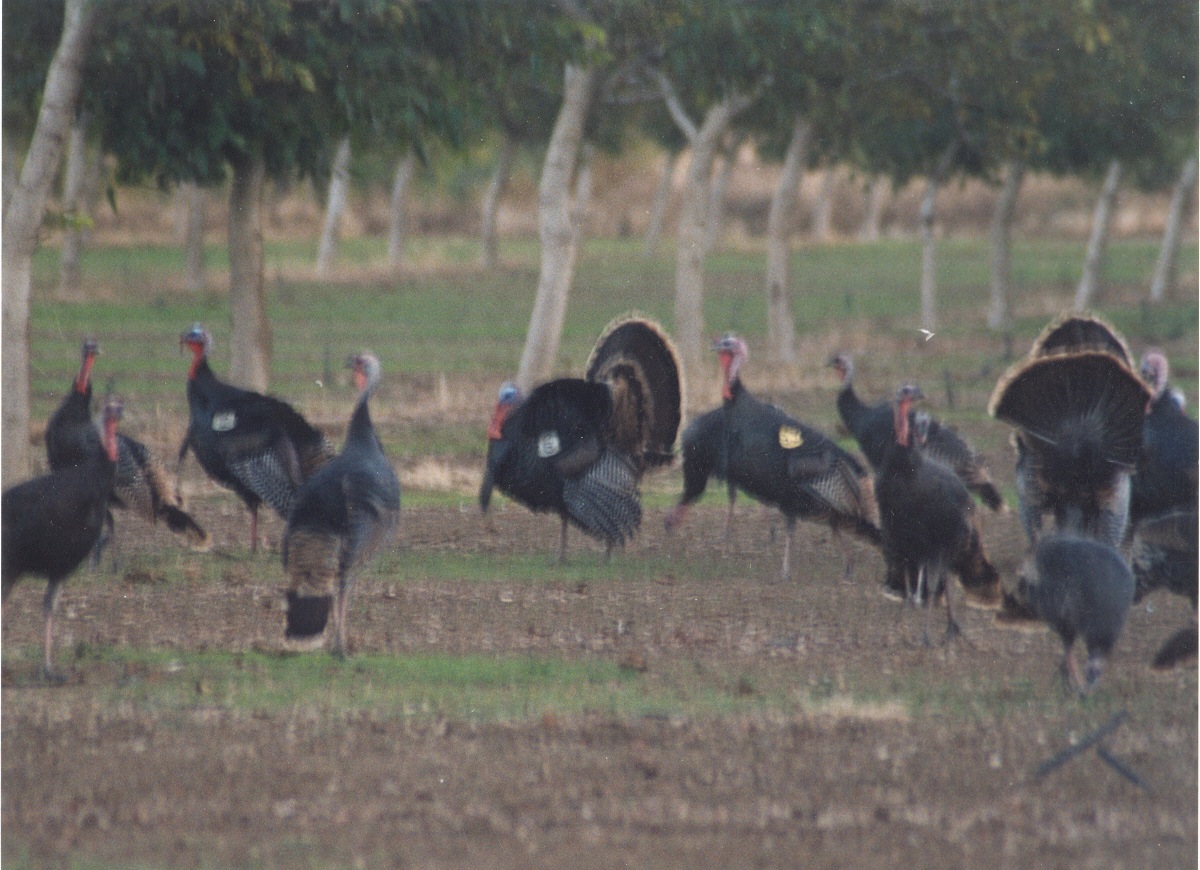Habitat
When we acquired land near the hills in June of 1986 it was virtually treeless except for some eucalyptus near the old barn and along the slough, basically rolling terrain with raptors and weeds. By November of that year we had put in the first of 8 ponds and begun to plant blue, valley and interior live oaks, trying to recreate the native oak and grassland habitat.
After a fire in 1990, we waited for rain. Up came the invasive grasses and we sprayed them with herbicide. We direct seeded (no till) native grass seeds, praying that it would rain again. It did. We had some 40 acres of purple needle grass and other perennials on these hills. The voluminous seed production of the invasive grasses makes it a constant battle between them and the natives. The native grasses seem to do somewhat better on the north and east facing slopes, where it is not quite as hot and dry. At least with the oaks, we know they will be there far into the future.
Our ponds dry up in the summer ("vernal ponds"), but during the spring there is enough run-off so that the wood-ducks, mallards, and Canada geese breed there. Our ponds also attract mergansers, buffleheads, goldeneyes, dowitchers, kingfishers, heron, egrets, woodpeckers, muskrats, otters and minks. We also think we are getting some ground-water recharge but we wish we had better information about this.
Inspired by our neighbors, John and Marsha Anderson, and aided and abetted by the Biologically Integrated Orchard Management program, we started planting hedgerows at Citrona Farms in 1998 and within a few years noticed changes not just in the flora but in the fauna -- many more California Quail and we started to see cottontail rabbits instead of only jackrabbits.
We also hosted a project by SLEWS (Student and Landowner Education and Watershed Stewardship), run by the Center for Land-Based Learning in Winters CA, with the cooperation of the Natural Resources Conservation Services. SLEWS engages high school students in conservation practices and habitat restoration. They widened several of our drainage ditches, contouring the sides and planting with native grasses, shrubs, and trees. These formerly bare ditches have now become busy wildlife corridors.
Just eyeballing it, we could tell that these hedgerows were helping to build up populations of native quail, providing them much needed cover from their predators. Using more careful scientific sampling, Sacha Heath and colleagues have documented that there are significantly more bird species along crop margins with hedgerows. [PDF]
But what about other wildlife? By 2014 good empirical evidence started coming in documenting how the all-season availability of nectar affects native bees and domestic honeybees.
Encouraged by these findings, in February of 2015, we put in another half-mile hedgerow, repeating sequences of quail bush, coyote brush, California buckwheat, coffeeberry, elderberry, toyon, redbud, California wild rose, deer grass and St. Catherine's lace, adding sugar bush and spice bush in every other unit, with occasional oak seedlings wherever we put in deer grass.
We have also put out bee blocks near some of the hedgerows for native pollinators. For more on pollinator-friendly practices see the Xerces website.
A series of dedicated scientists have been doing research at the farm. Claire Kremen's group from the Department of Environmental Science, Policy and Management at the University of California, Berkeley have been at the forefront in studying how different agricultural practices (including hedgerows) affect pollinating insects. (See the article she co-authored with Lora Morandin on "Bee preference for native versus exotic plants in restored agricultural hedgerows" published in 2012 in Restoration Ecology). Closer to home, Rachael Long, UC Davis Farm Advisor in the cooperative extension program and others at UC Davis are looking at the effects of hedgerows on bats, rodents, and various bird species.
Some of the most satisfying information to emerge came from UCD Ecology Graduate Group Sacha Heath's study of "Birds as predators of codling moths in walnut orchards: The effect of habitat patches on orchard edges". From Sacha we learned that one of our favorite birds, Nuttall's woodpeckers, not only have exemplary family lives (socially monogamous and both parents take care of the chicks) -- which we knew -- but also are among a walnut grower's best friends, which we had not realized. During the winter these "bark gleaners" pick off the larvae of codling moths from the trunks of walnut trees -- nature's own selective pest control.
UCD undergraduates have also undertaken various projects out here. The finest such study was undertaken in 2000 by Kirk Ehmsen on "The role of kin selection in the reproductive tactics of the wild turkey (Melagris gallopavo) at Citrona Farms". Kirk is a true naturalist, was sponsored by Professor John Eadie. Experienced bird researcher Ada Fowler helped him to net and mark the turkeys and take DNA samples.
In 2016-2017, we had a record rainfall year, and all our ponds filled up. Here are some drone shots, showing the "Western Wetlands," the "North Pond" and the "Orchard Pond." The recharge will help keep our aquifer recharged and ground water pumping levels stable.
The winter of 2018-2019 we once again had lots of rain (nearly 30 inches). But what about the future? Even before the catastrophically bad wildfires of 2018, long predicted effects of climate change were becoming all too evident (e.g.what are road runners doing here?). For those of us interested in habitat preservation and restoration, what climate can we realistically plan for and what can farmers do to improve future prospects? Enter researchers like Louise Jackson from the Department of Land, Air and Water Resources at UCD with team members Jessica Chiartis and Garett Long, exploring novel ways to mitigate greenhouse gas emissions by studying which soil types and plant communities might be best suited for sequestering carbon in hedgerow systems vs annual crops https://ucanr.edu/sites/Jackson_Lab/
We are so grateful to all the researchers who have worked at Citrona Farms. They have deepened our understanding of this part of the world. Click here for complete list of researchers who have worked at Citrona Farms.




























